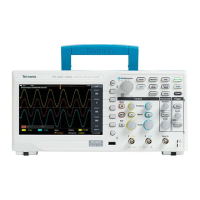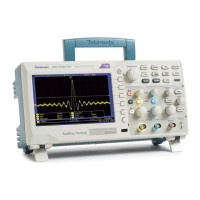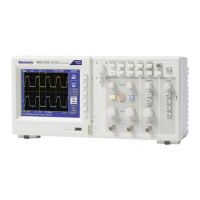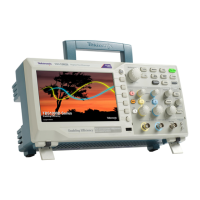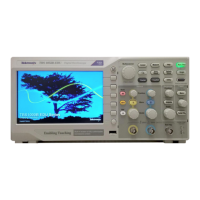Performance Verification
The Ext Trig inp
ut will also be receiving approximately 200 mV
p-p
. Small
deviations from the nominal 200 mV
p-p
oscilloscope d isplay are acceptable.
7. Set the levele
d sine wave g ene rator frequency to:
150 Mhz if you are checking a TBS1154 or a TBS1152
100 MHz if you are checking a TBS1104 or a TBS1102
60 MHz if you are checking a TBS1064 or a TBS1062
40 MHz if you are checking a TBS1042
25 MHz if you are checking a TBS1022
8. Set the os
cilloscope H o rizontal Scale (seconds/division) to 5ns/div.
9. Push Set To 5 0%. Adjust Trigge r Level as necessary and then c heck that
trigger
ing is stable.
10. Set the oscilloscope Horizontal Scale (seconds/division) to 2.5 ns/div.
11. Push Set To 50%. Adjust Trigge r Level as necessary and then c heck that
triggering is stable.
12. Change the o scilloscope setup using the following table:
Push m enu button Select menu option Select setting
Trig
Menu
Slope
Fall
ing
13. Push Set To 50% . Adjust Trigger Level as ne ces sary and then check tha t
triggering is stable.
14. Disconnect the test setup.
Check Vertical Position
Accuracy
The results of this test and the DC Gain Accuracy test together define the D C
Measurement Accuracy of the oscilloscope. The DC Measurement A ccuracy
specification encompasses two different ranges of operation over two different
attenuator settings.
DC Gain Accuracy: Identifies errors, m ostly from the A/D converter,
when the vertical position (known as offset in these oscilloscopes) is set to
0 divisions (or a grounded input will show screen center)
Vertical Position Accuracy: Identifies errors, mostly from the position control,
made when the vertical position is set to a non-zero value
The two attenuator settings operate identically, so verification of the attenuation
range from -1.8 V to 1.8 V also verifies the attenuation range of -45 V to 45 V.
4–10 TBS1000 Series Oscilloscope Service Manual
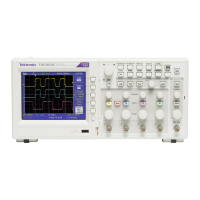
